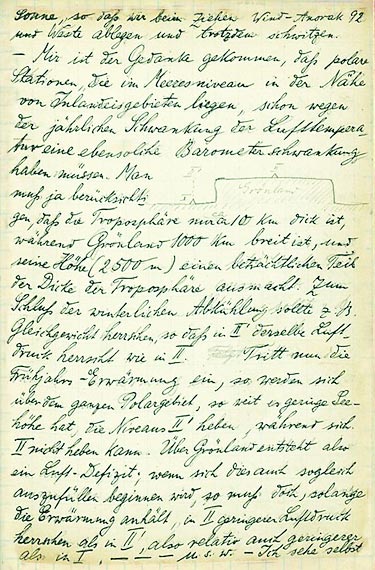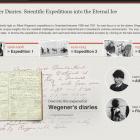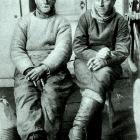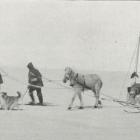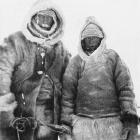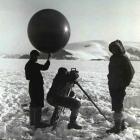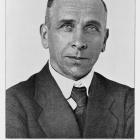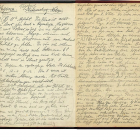NL 001-010_092
Source: Alfred Wegener, Tagebücher, June 1912 – July 1913. DMA NL 001/010.
[092] Sonne, so daß wir beim Ziehen Wind-Anorak und Weste ablegen und trotzdem schwitzen. – Mir ist der Gedanke gekommen, daß polare Stationen, die im Meeresniveau in der Nähe von Inlandeisgletschern liegen, schon wegen der jährlichen Schwankung der Lufttemperatur eine ebensolche Barometerschwankung haben müssen. Man muß ja berücksichtigen, daß die Troposphäre nur ca 10 km dick ist [kleine Bleistiftskizze], während Grönland 1000 km breit ist, und seine Höhe (2500 m) einen beträchtlichen Teil der Dicke der Troposphäre ausmacht. Zum Schluß der winterlichen Abkühlung sollte z.B. Gleichgewicht herrschen, so daß in II‘ derselbe Luftdruck herrscht wie in II. Tritt nun die Frühjahrs-Erwärmung ein, so werden sich über dem ganzen Polargebiet, so weit es geringe Seehöhe hat, die Niveaus II‘ heben, während sich II nicht heben kann. Über Grönland entsteht also ein Luft-Defizit; wenn sich dies auch sogleich auszufüllen beginnen wird, so muß doch, solange die Erwärmung anhält, in II geringerer Luftdruck herrschen als in II‘, also relativ auch geringerer als in I. – u.s.w. – Ich sehe selbst
[092] so that we take off our windbreakers and vests while pulling and still sweat. – It has occurred to me that polar stations located in the vicinity of the ice sheet glaciers at sea level must experience similar barometer fluctuations, at the very least due to the annual fluctuation in air temperature. One has to consider that while the troposphere is only about 10 m thick [small pencil drawing], Greenland is 1,000 km wide, and its height (2,500 m), constitutes a substantial part of the thickness of the troposphere. At the end of the winter’s cooling-off period, atmospheric pressure in II’ is equal to II, striking a sort of balance. Once the spring temperatures rise, the entire polar region, given that it is at a low altitude, will rise to level II’, whereas II will not be able to go up at all. An air-deficit will settle over Greenland; as soon as it begins to fill in during the warming, the air pressure will be lower in II than in II’, therefore, it will also be relatively lower than in I. — etc. – I myself
